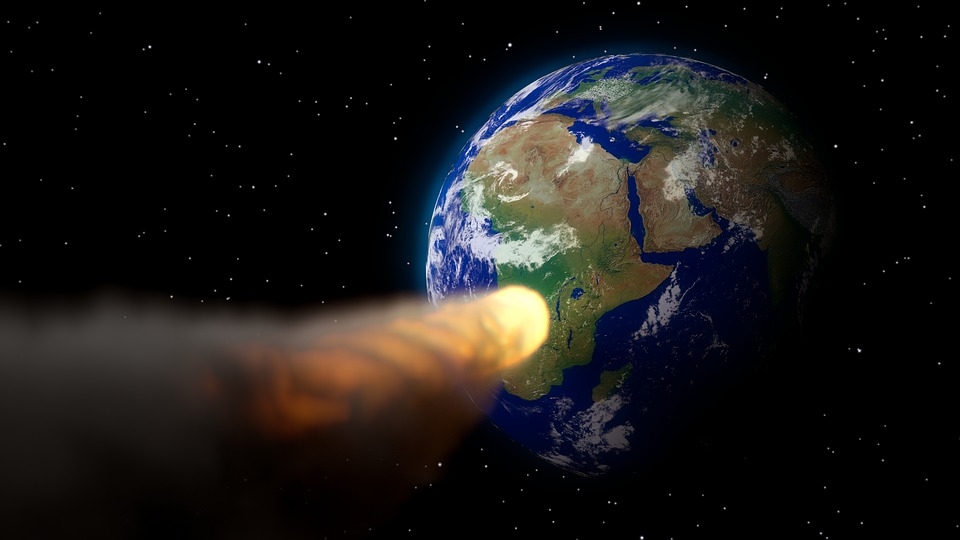It appears that another asteroid is spotted going Earthbound by NASA recently. A report reveals that a space rock is on its way for a close encounter with the planet at a speed of 21,100 miles per hour.
NASA’s asteroid trackers caught sight of a space rock traveling towards the vicinity of the Earth at a speed of about 21, 139 miles per hour. The agency has referred to the asteroid as 2020 CH after its date of discovery and classified it as a Near-Earth Object or NEO. It was first seen a week prior, but NASA has confirmed that it is bound for a close encounter with Earth. It is predicted to come close by the 10th of February. 2020 CH is estimated to measure between 75.4 feet to 179.6 feet in diameter, making it a fairly small asteroid.
If ever 2020 CH were to collide with Earth, it would likely burn upon contact with the atmosphere because of its size. However, there is still a chance that this small asteroid may make it through and crash, based on the 2013 Chelyabinsk incident, which proved that even small asteroids could pack quite a punch when making an impact for the ground or a body of water.
Fortunately, the asteroid is not expected to collide with Earth once it makes its approach. The closest it will get would be from a distance of 0.02975 astronomical units. This is equivalent to 4.45 million kilometers in human measurements. Although this is still incredibly far away, it is still close enough to be noticed by NASA.
Although small asteroids can burn up upon contact with the Earth’s atmosphere, fragments of the rock may still make it through and cause some damage as well. But it is not just the atmosphere that can destroy a small asteroid. New research has revealed that the lights emanating from stars can also destroy an asteroid.
The electromagnetic radiation that comes from dying stars just past their red giant phase would be strong enough to send speeding asteroids into destruction. According to the researchers, the sun alone can destroy the asteroid belt in a span of a billion years.



 Why now is the time to address humanity’s impact on the moon
Why now is the time to address humanity’s impact on the moon  Alpha, beta, theta: what are brain states and brain waves? And can we control them?
Alpha, beta, theta: what are brain states and brain waves? And can we control them?  Larger and more frequent solar storms will make for potential disruptions and spectacular auroras on Earth
Larger and more frequent solar storms will make for potential disruptions and spectacular auroras on Earth  Tatahouine: 'Star Wars meteorite' sheds light on the early Solar System
Tatahouine: 'Star Wars meteorite' sheds light on the early Solar System  Orbital resonance − the striking gravitational dance done by planets with aligning orbits
Orbital resonance − the striking gravitational dance done by planets with aligning orbits  Why some people don't trust science – and how to change their minds
Why some people don't trust science – and how to change their minds  If life exists on Jupiter’s moon Europa, scientists might soon be able to detect it
If life exists on Jupiter’s moon Europa, scientists might soon be able to detect it  Eggs from men, sperm from women: how stem cell science may change how we reproduce
Eggs from men, sperm from women: how stem cell science may change how we reproduce  Archeoastronomy uses the rare times and places of previous total solar eclipses to help us measure history
Archeoastronomy uses the rare times and places of previous total solar eclipses to help us measure history  Six space missions to look forward to in 2024
Six space missions to look forward to in 2024  Spacesuits need a major upgrade for the next phase of exploration
Spacesuits need a major upgrade for the next phase of exploration  Black hole, neutron star or something new? We discovered an object that defies explanation
Black hole, neutron star or something new? We discovered an object that defies explanation  Why is the universe ripping itself apart? A new study of exploding stars shows dark energy may be more complicated than we thought
Why is the universe ripping itself apart? A new study of exploding stars shows dark energy may be more complicated than we thought 






























